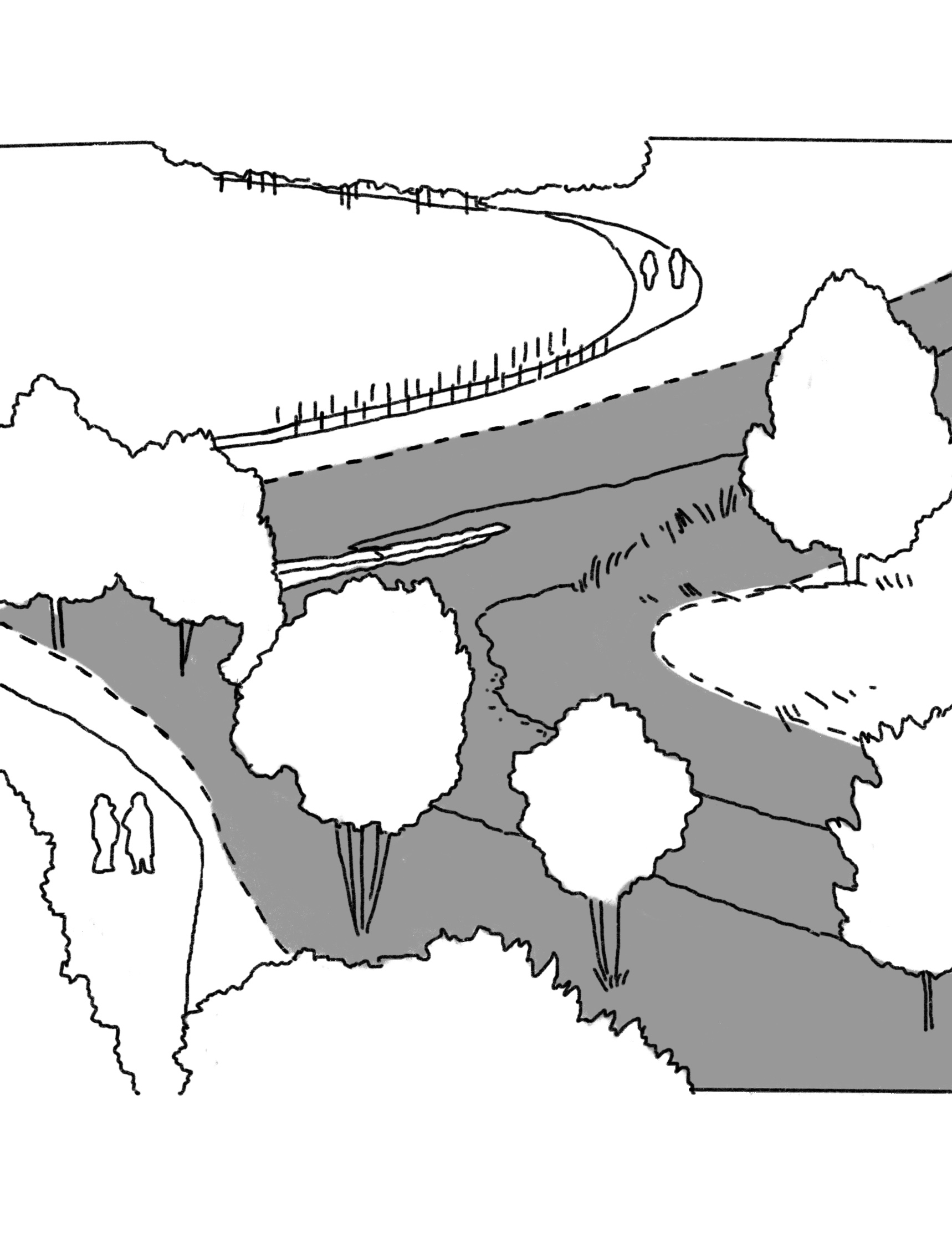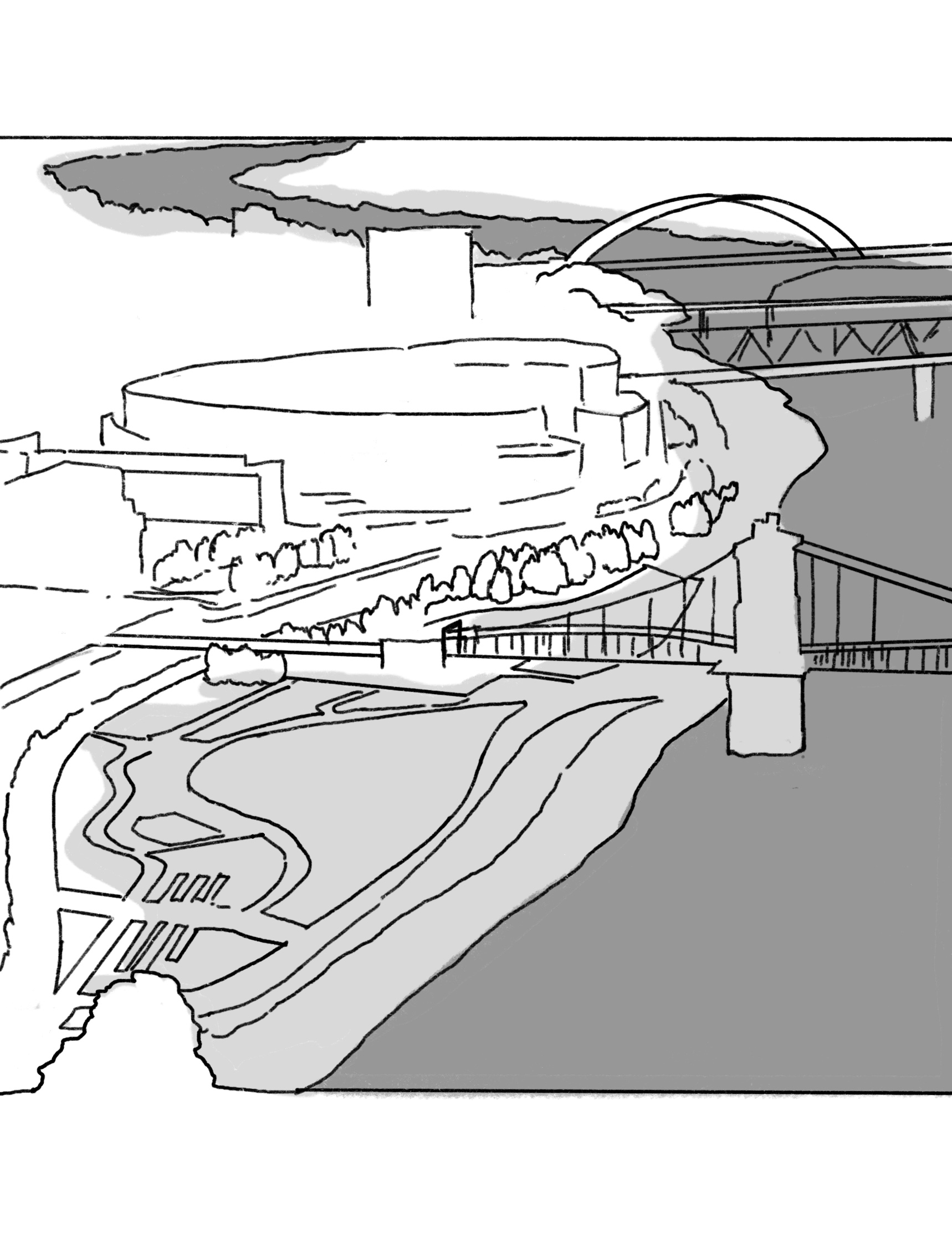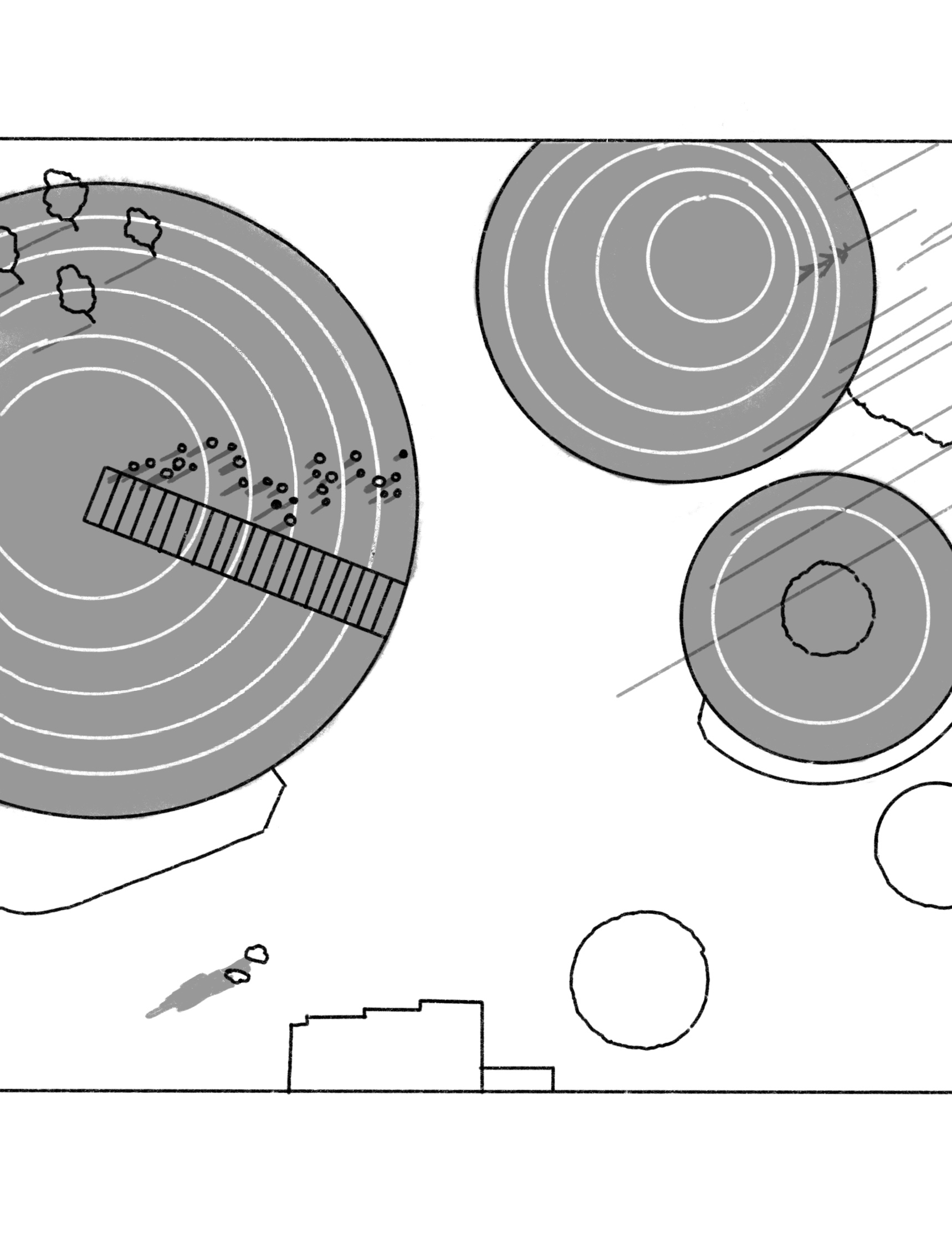Strategy
Adaptation
Design for Floodability
In regions where inland or coastal flood events are becoming more frequent and severe, sites can be designed to withstand periodic inundation without experiencing catastrophic failure. Designers can select and configure plants and other materials to withstand fast-moving water, silt, and debris.
Design for robustness (the capacity to withstand adverse conditions)
Options
...with over-engineered or overbuilt elements (like heftier light poles, railings, trash cans, and furnishings anchored below ground; deep bridge pilings in soft soil).
...with the selection of plants with low soil oxygen requirements and salt-tolerance that can withstand prolonged salt water inundation.
...with the selection of plants with low soil oxygen requirements that can withstand prolonged freshwater inundation.
Case Study
For Mill River Park and Greenway, an urban river renaturalization project, OLIN planted several inundation-tolerant species in the re-engineered riparian floodplain including river birch (Betula nigra), American sycamore (Platanus occidentalis), and swamp white oak (Quercus bicolor).

Incorporate redundancies
Options
...with redundant features (like upper and lower paths).
...with low lying areas that could be sacrificed if badly damaged by water, sediment, or debris.
Case Study
Buffalo Bayou Park was designed by SWA with redundant features like upper and lower pathways, which make it possible for pedestrians and cyclists to use even when water levels swell due to excess rainfall.

Design for the rapid containment of losses
Options
...with a site design for easy cleanup post-event.
...by educating people ahead of a disaster.
...by incorporating early warning systems.
Case Study
Sasaki’s design for the John G. and Phyllis W. Smale Riverfront Park includes a variety of removable features like picnic tables, restrooms, electrical equipment, and public artworks that can quickly be wheeled away from the floodplain by maintenance crews when flooding is forecast, and returned when water levels recede.

Design for the capacity to absorb and recover
Options
...with low-drag site elements that catch less debris when inundated or when draining (like sloped walk surfaces, sloped walls, rounded corners, curved railings, etc.).
...with material selection—those that bend but don’t break with wind, wave, or water flow pressure.
...with a moderately easy entry for water to the site so there will be less damage to site elements.
...with constructed arroyos that can absorb runoff in arid or semi-arid precipitation regimes.
Case Study
As part of Kokkedal Klimatilpasning, a multi-phase flood adaptation plan for a flood-prone town, Schønherr designed a recreation facility and children’s play area known as Bølgepladsen (wave square) as a series of sloped and rounded surfaces. These forms allow water to move in and off the site with limited drag, or resistance as a safeguard against heavy wear and tear.
